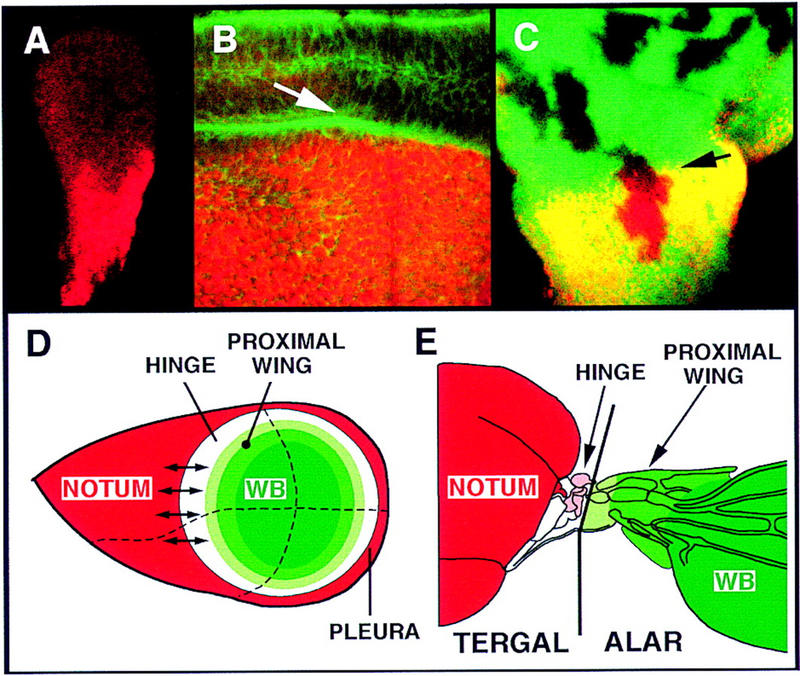Figure 5.

(A) Second instar disc. Caup (red) is present in the whole proximal region, the presumptive notum. During early third instar, expression extends into the presumptive pleura (not shown). (B) High magnification of notum/hinge area of mid-third instar disc showing the close spatial association between the Caup accumulating cells (red) and the developing notum/hinge fold (green, arrowed, phalloidin staining). (C) M+ cell lineage clones (absence of β-galactosidase marker, green) induced 72–96 hr AEL. A clone comprises cells at both sides of the Iro-C expression border (arrowhead). (D) Model of an idealized wing disc showing different concentric domains revealed by the expression patterns like the vg quadrant enhancer (wing blade, dark green), nub (wing blade and part of proximal wing, dark and medium green), l(2)09261 (wing hinge, white, plus wing, green), and Iro-C (notum and pleura, red) (see text). Small arrows indicate tissue-organizing properties of the border of Iro-C-expressing and nonexpressing cells, as suggested by the nonautonomous effects of the Iro-C− clones. Dashed lines represent anterior/posterior and dorsal/ventral compartment borders. (E) Scheme of the notum, wing hinge, and wing blade of an adult fly showing, as suggested by palaeontological (Kukalova-Peck 1978) and our data, extents of the tergal territory, which comprises the notum, hinge, and mesopleura (not shown), and the alar territory. Tegula and first and second sclerites are highlighted in pink.
